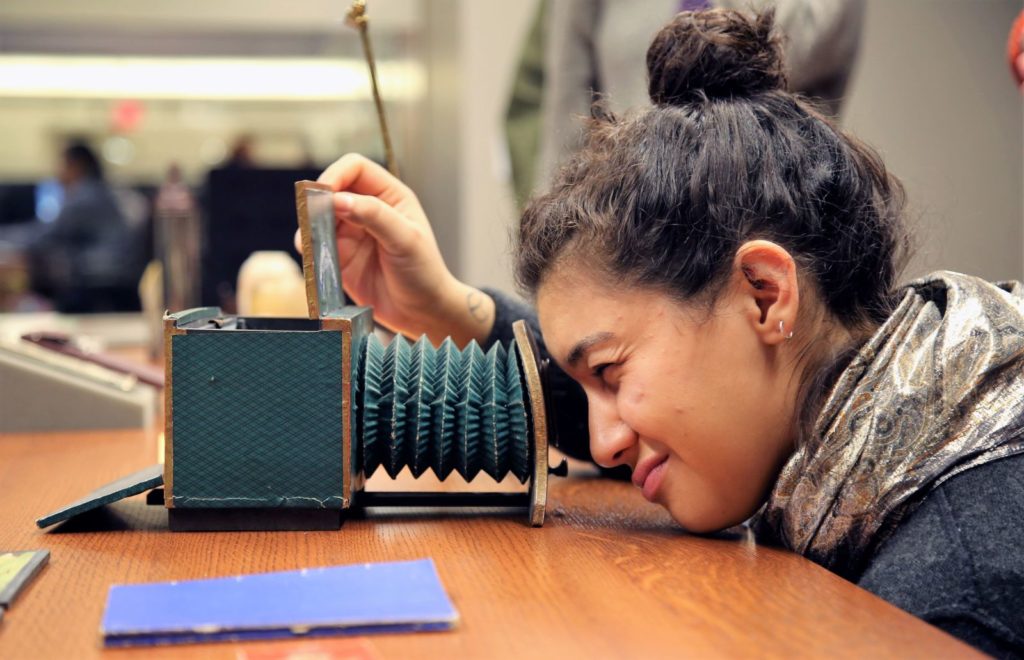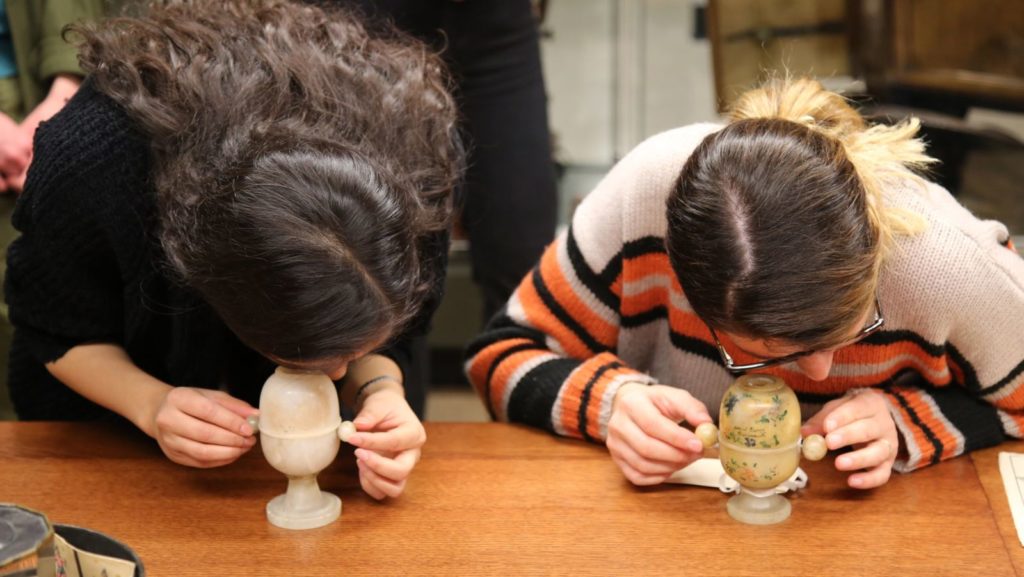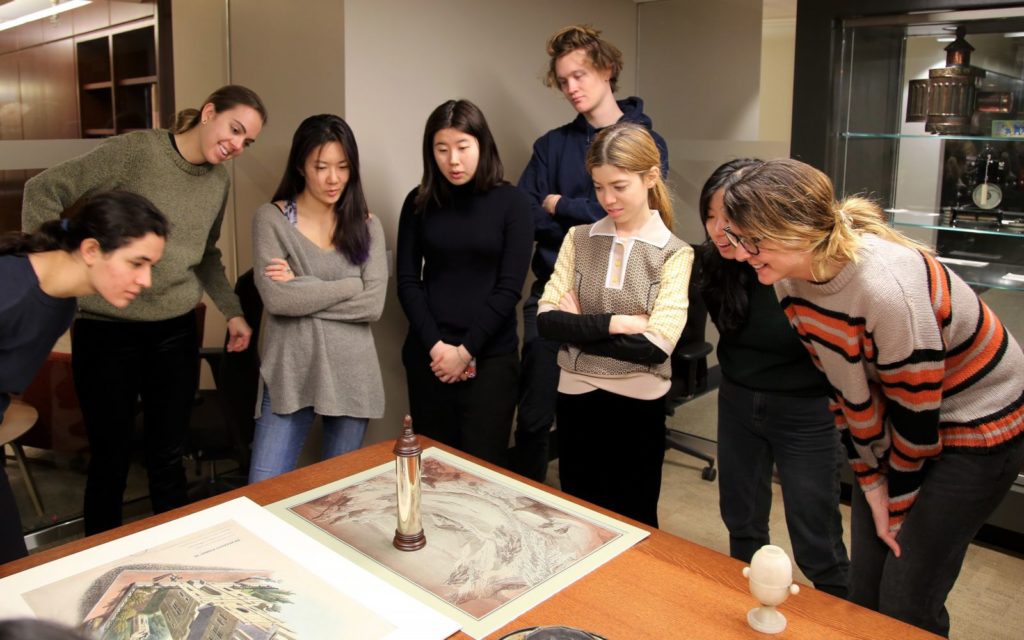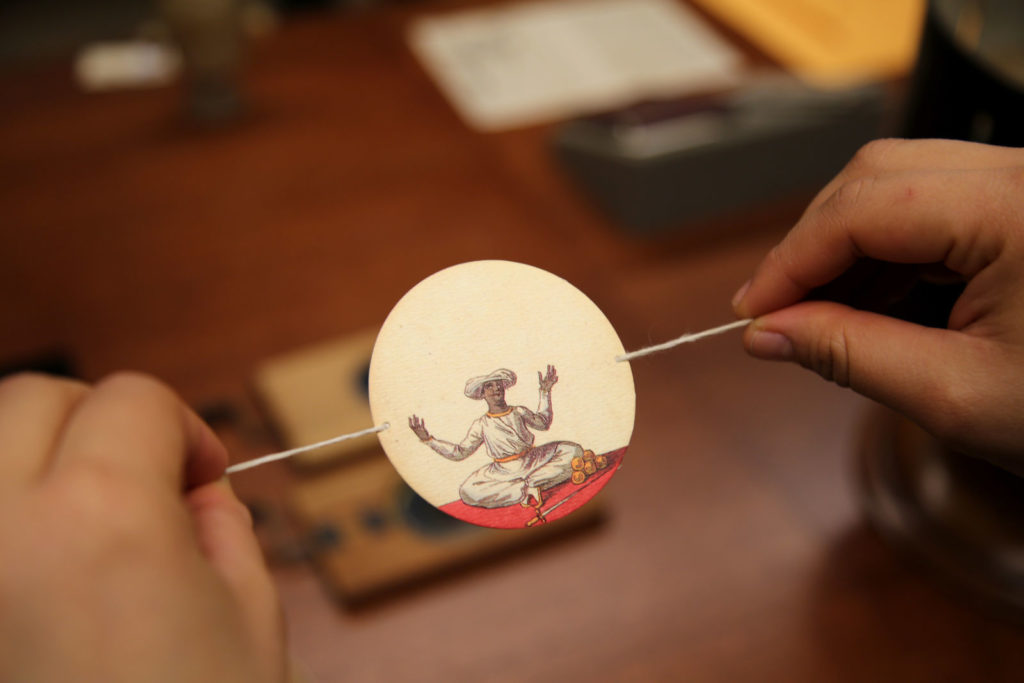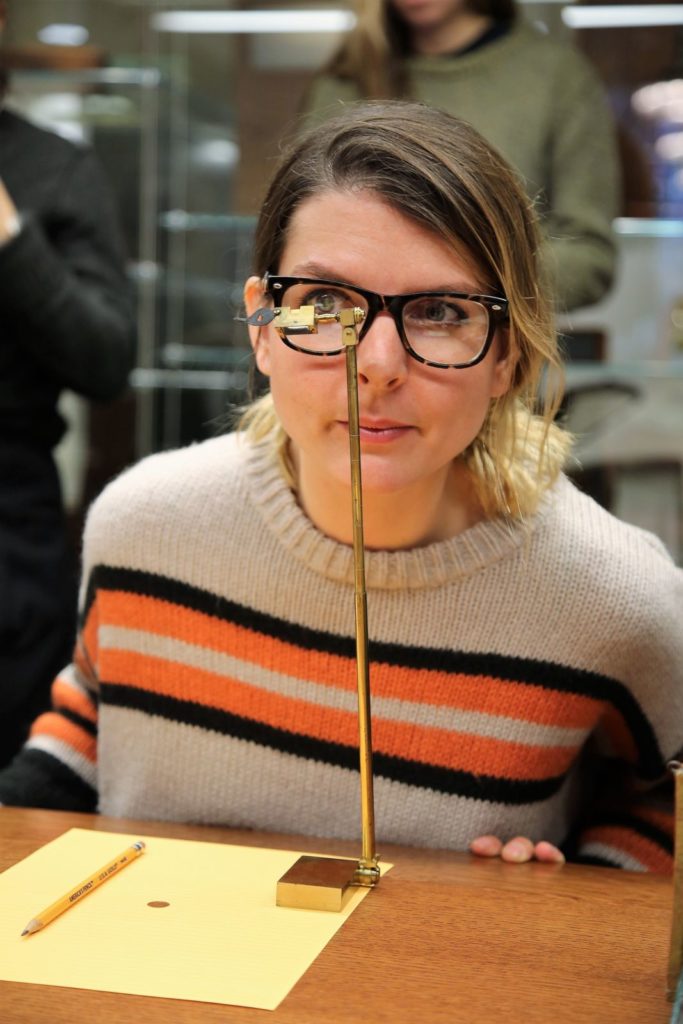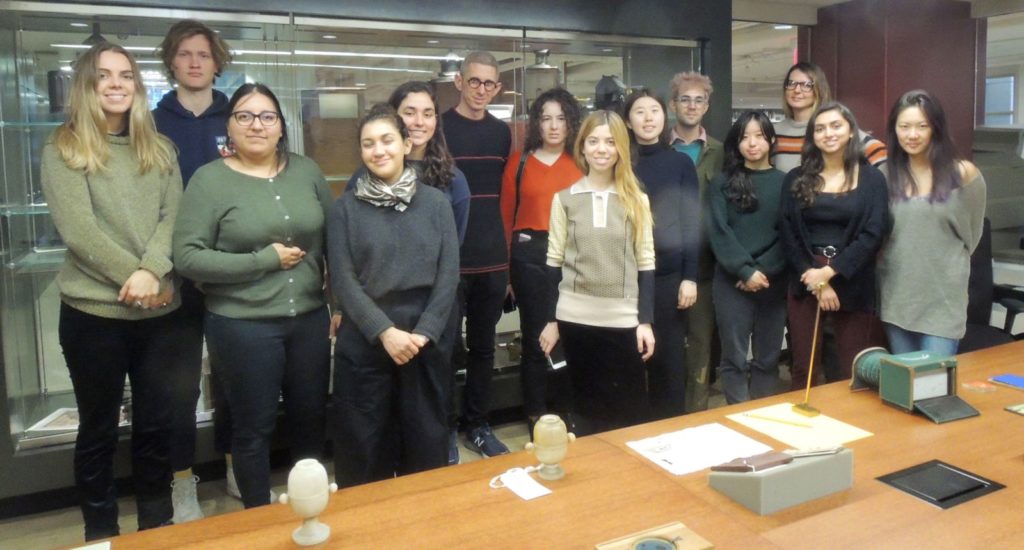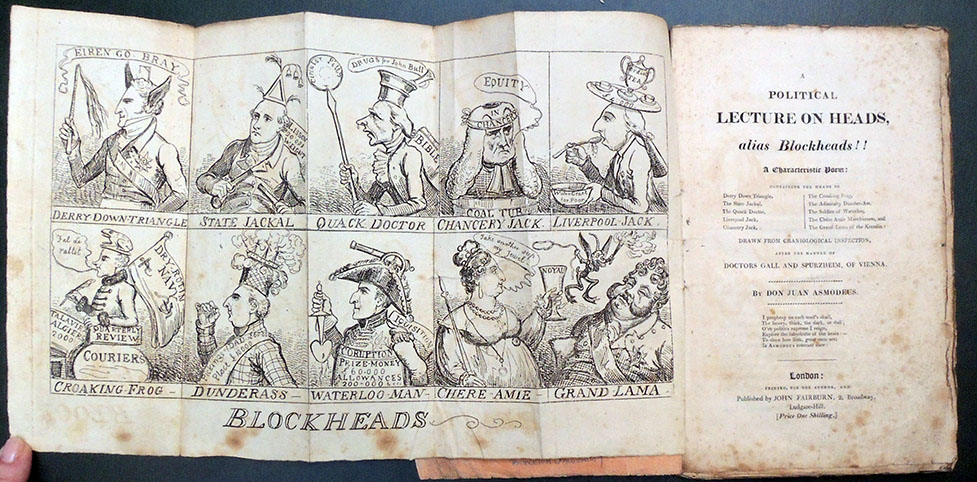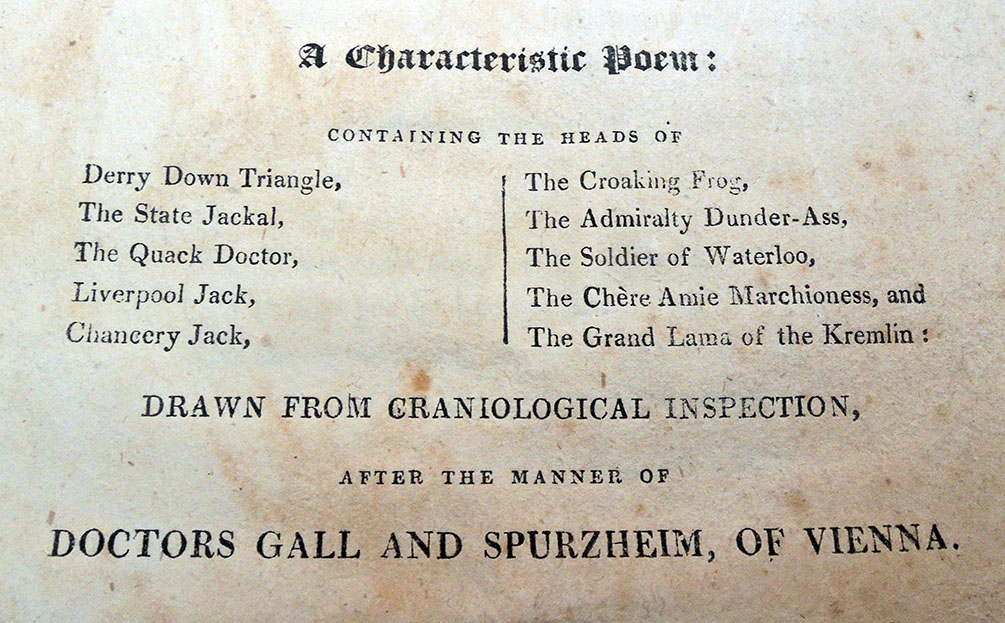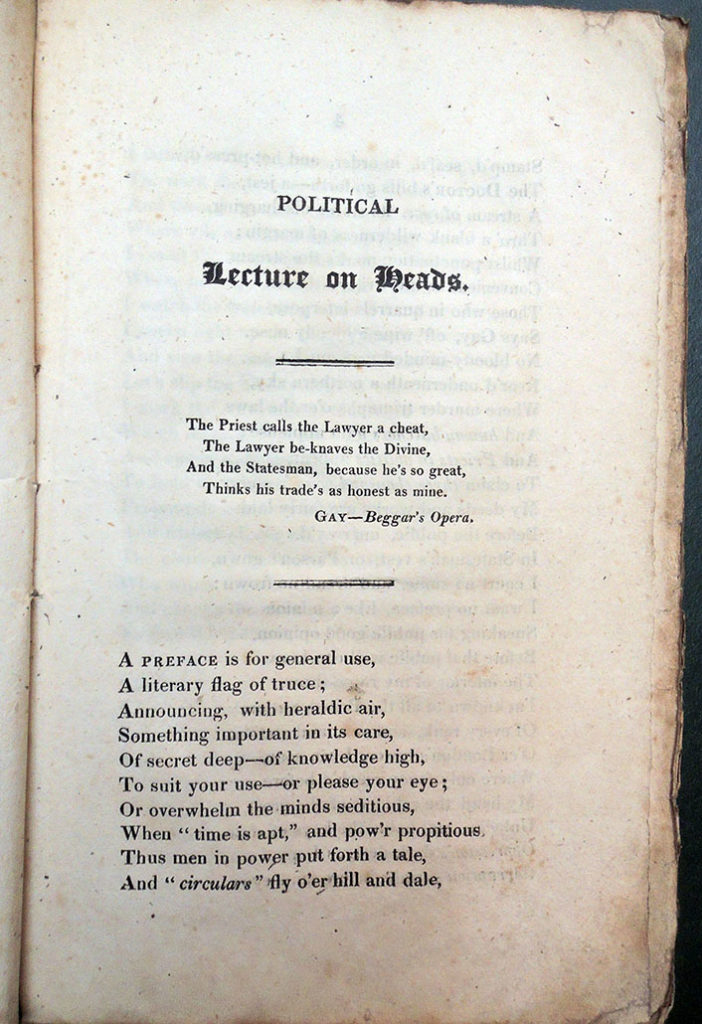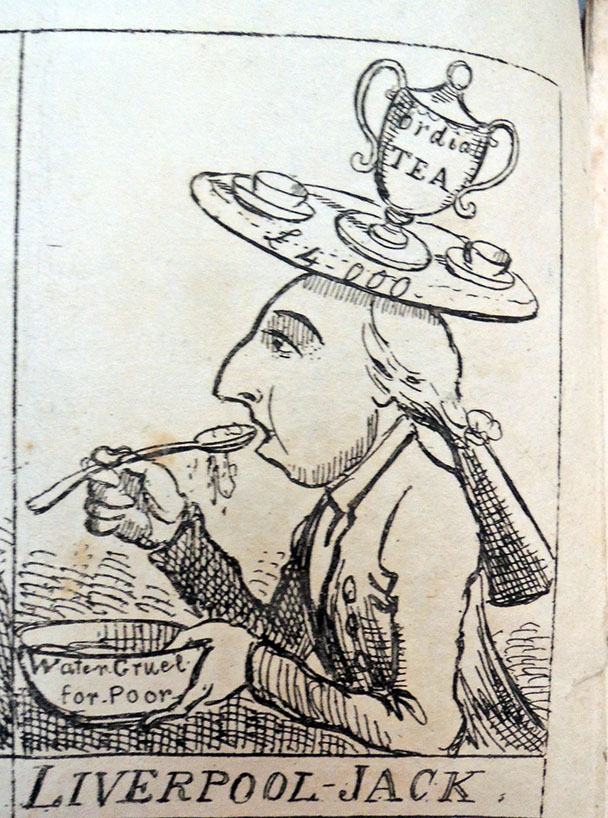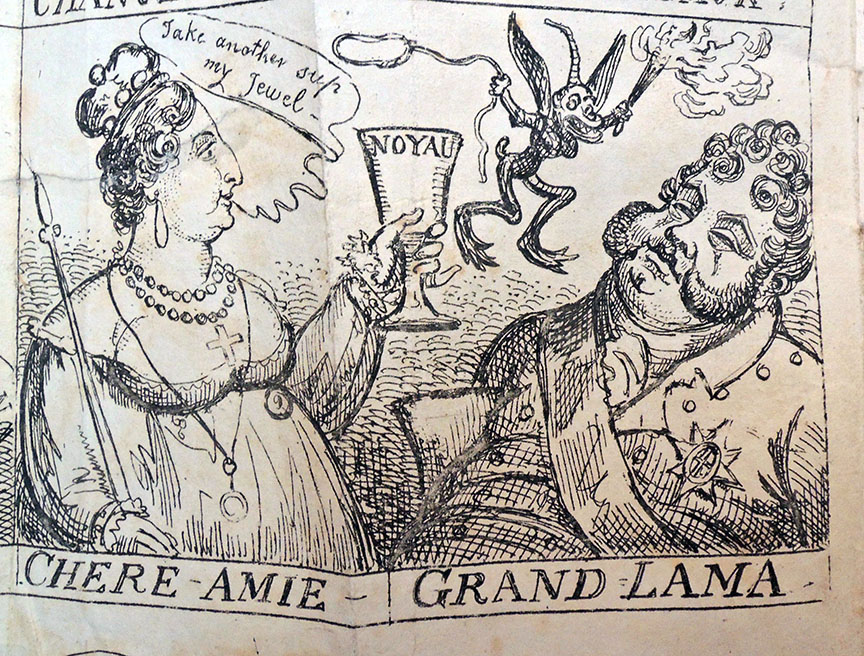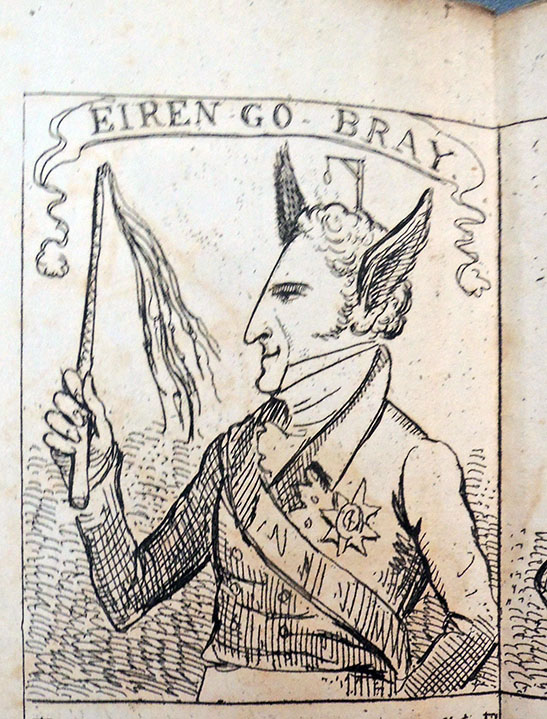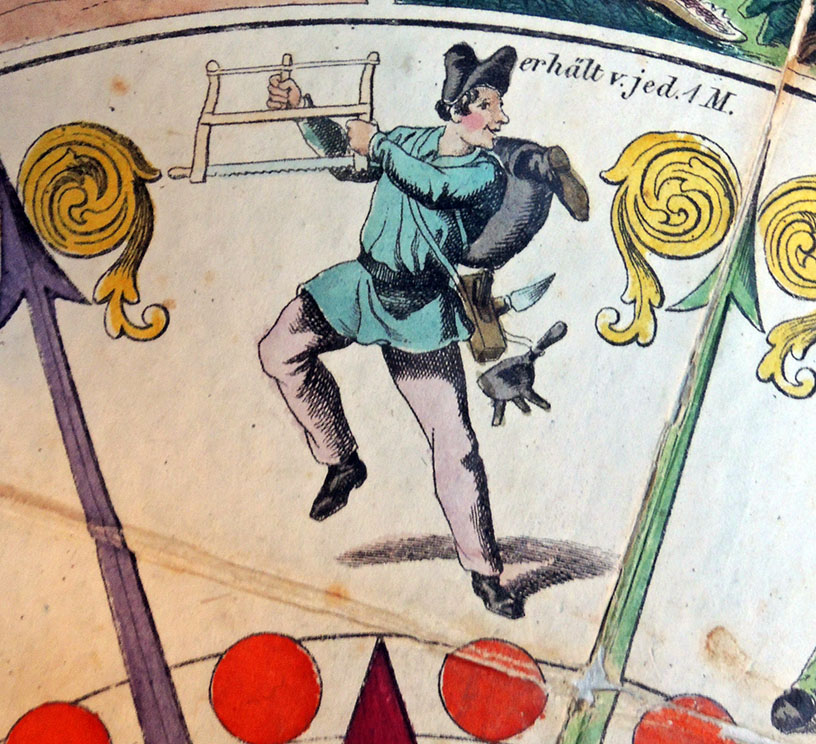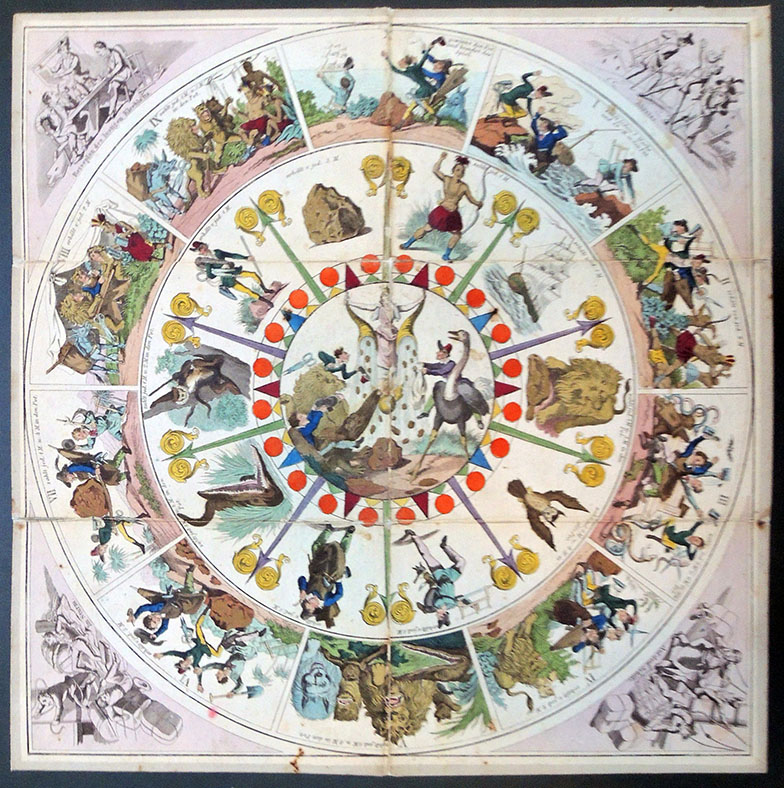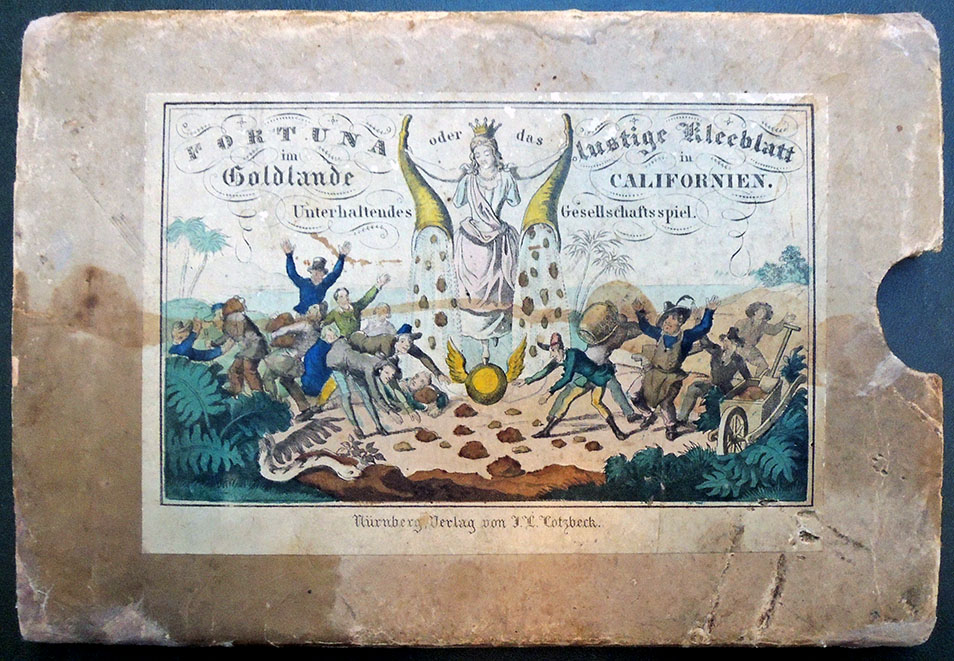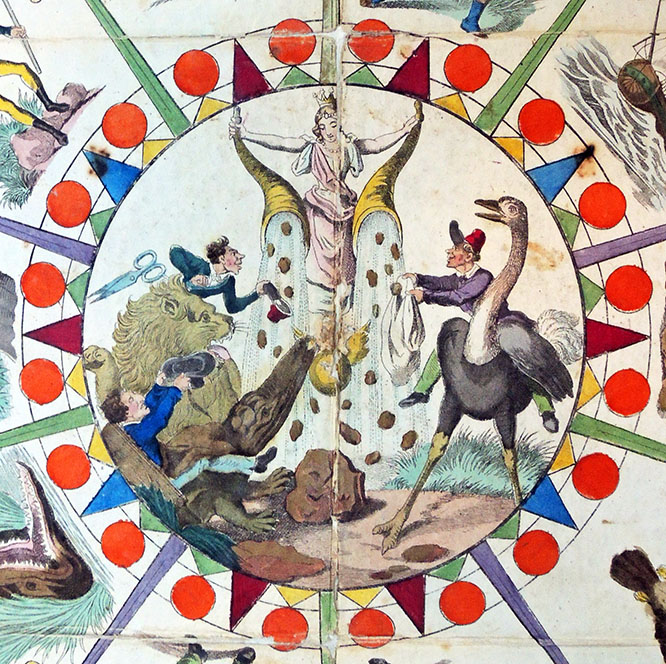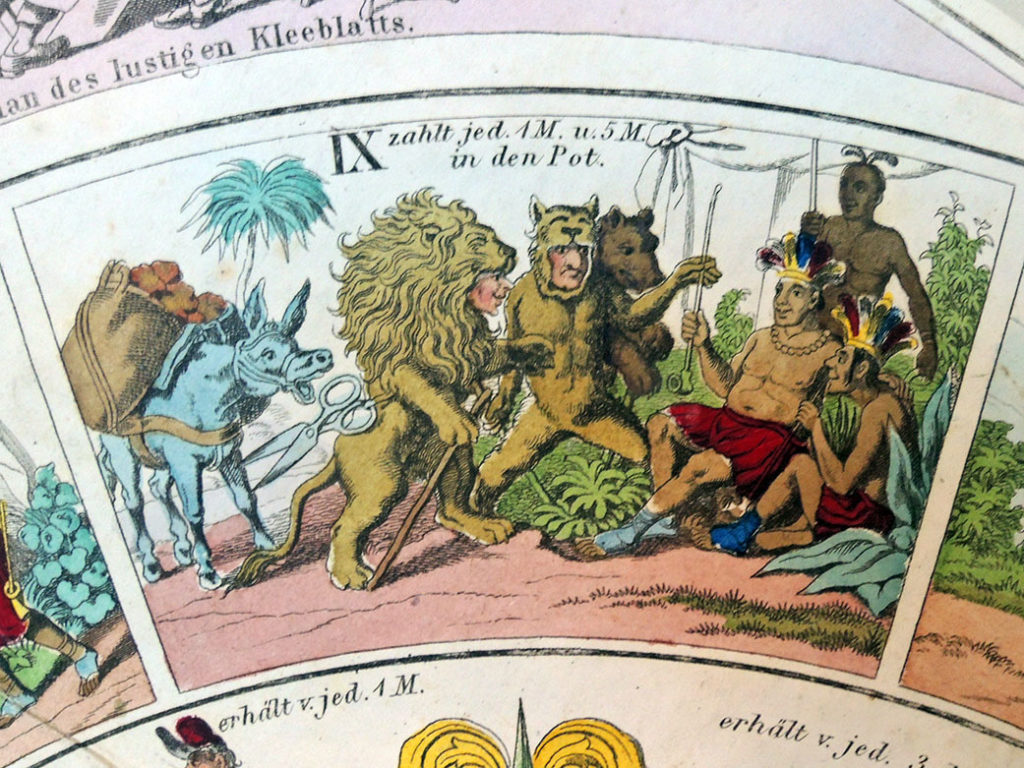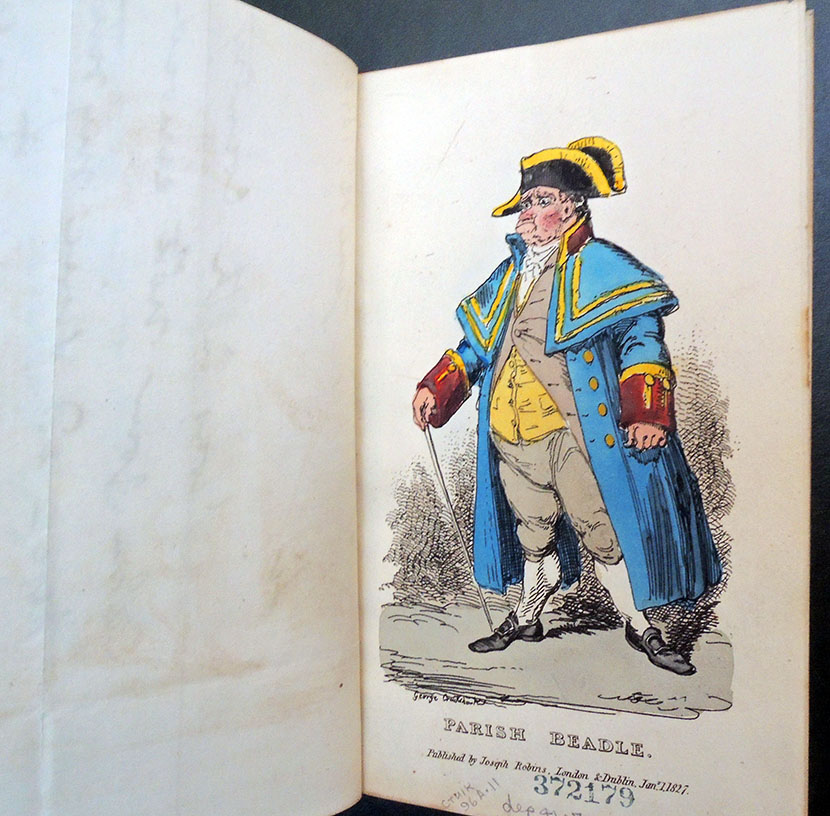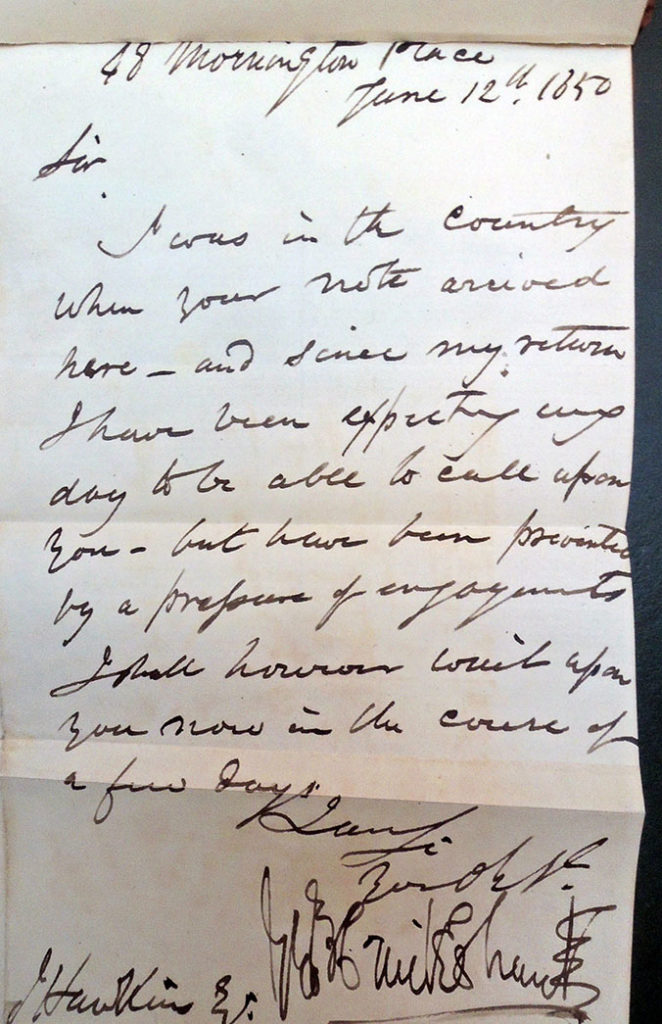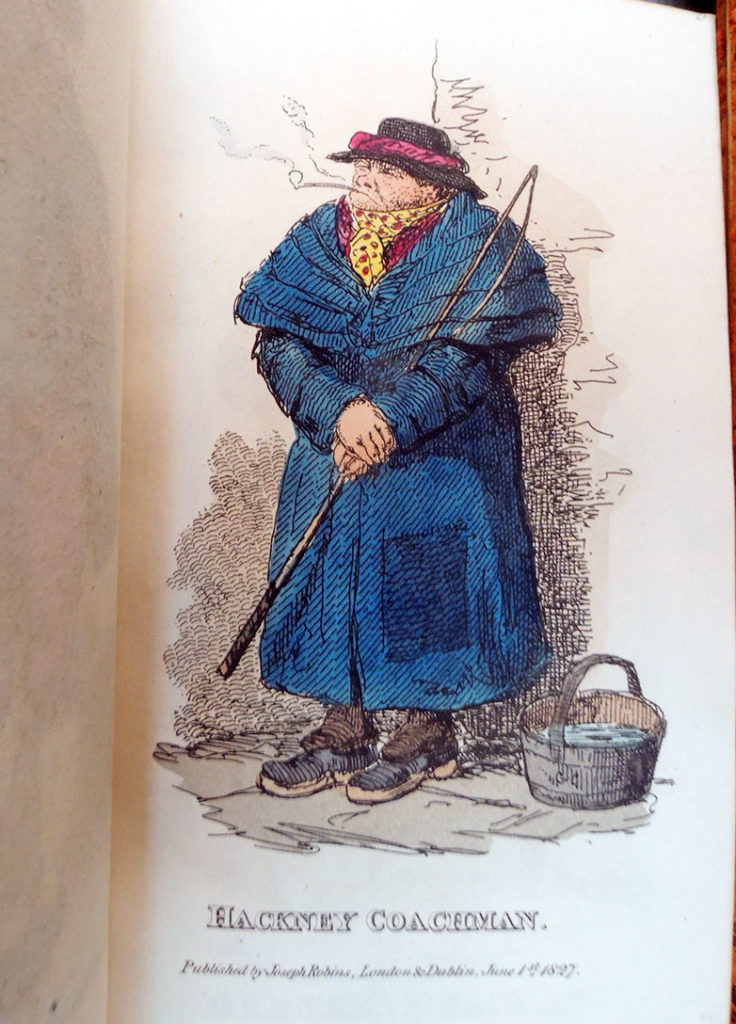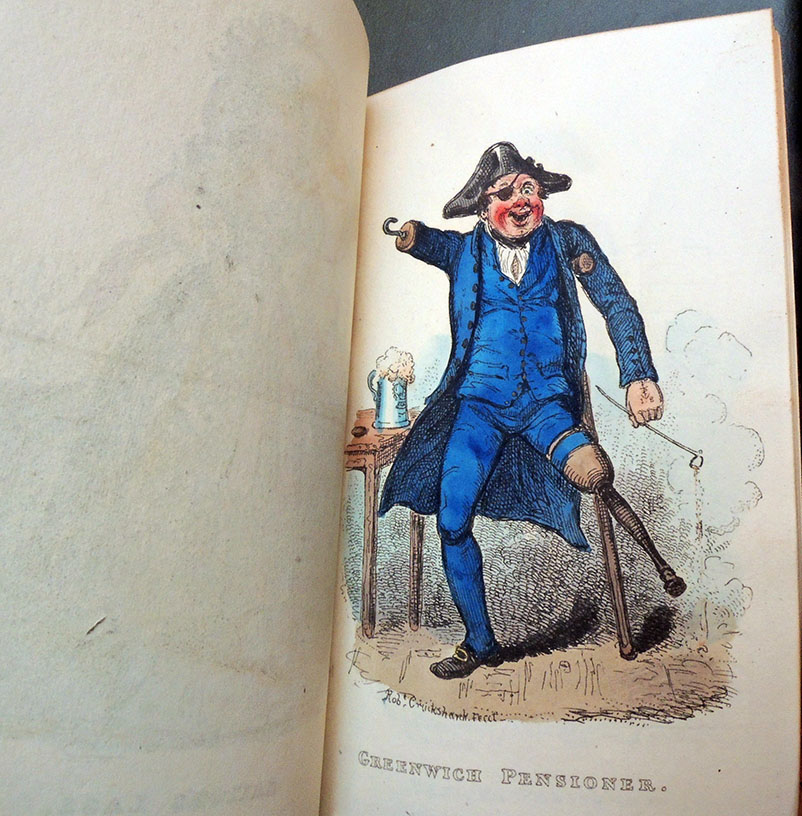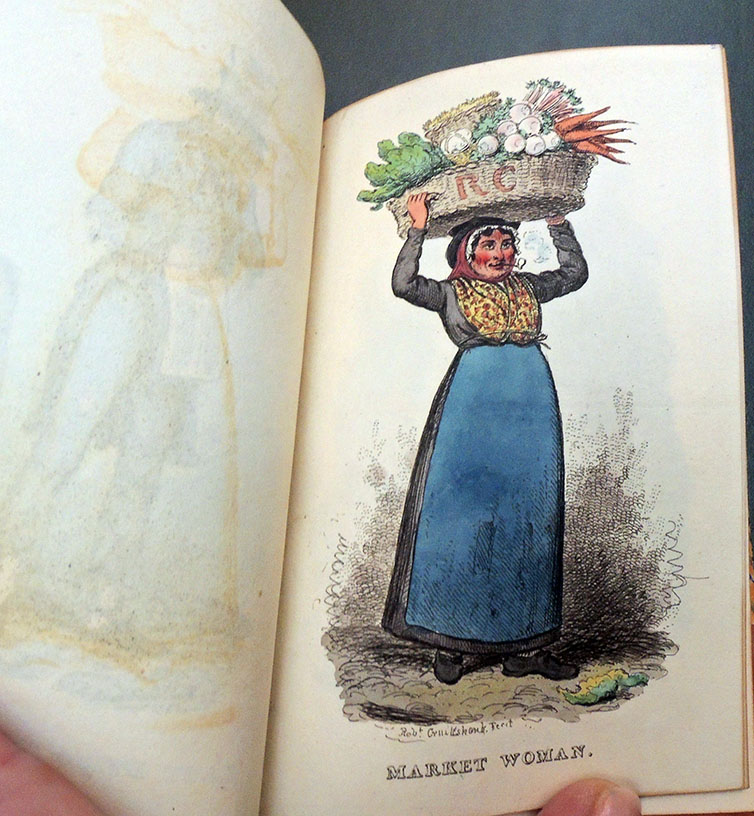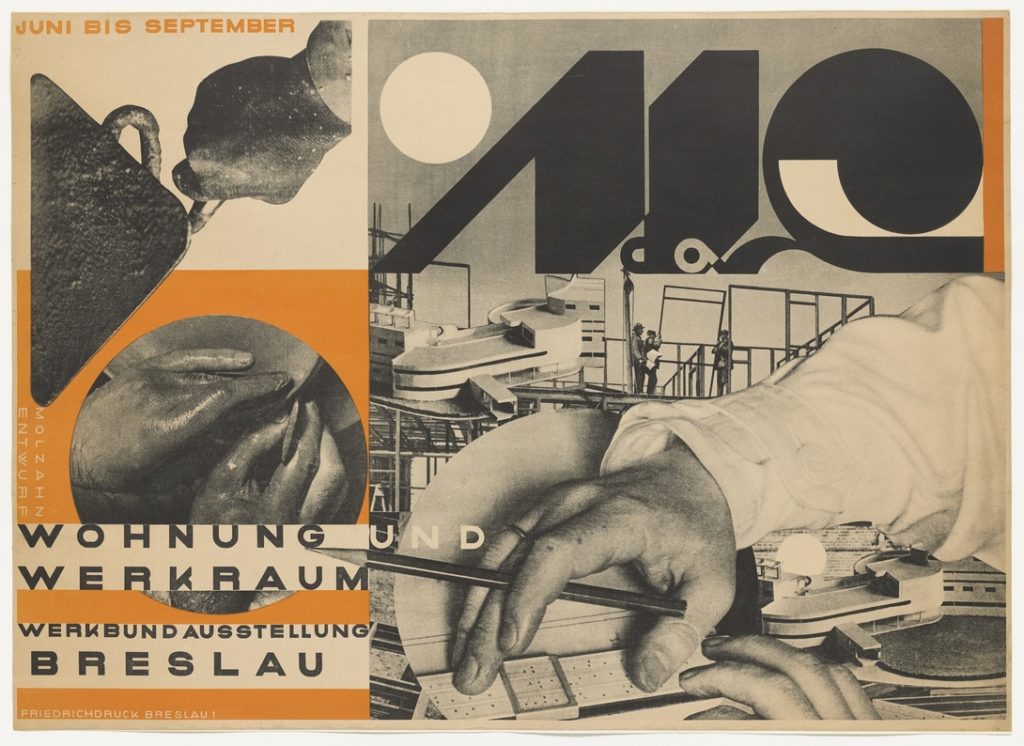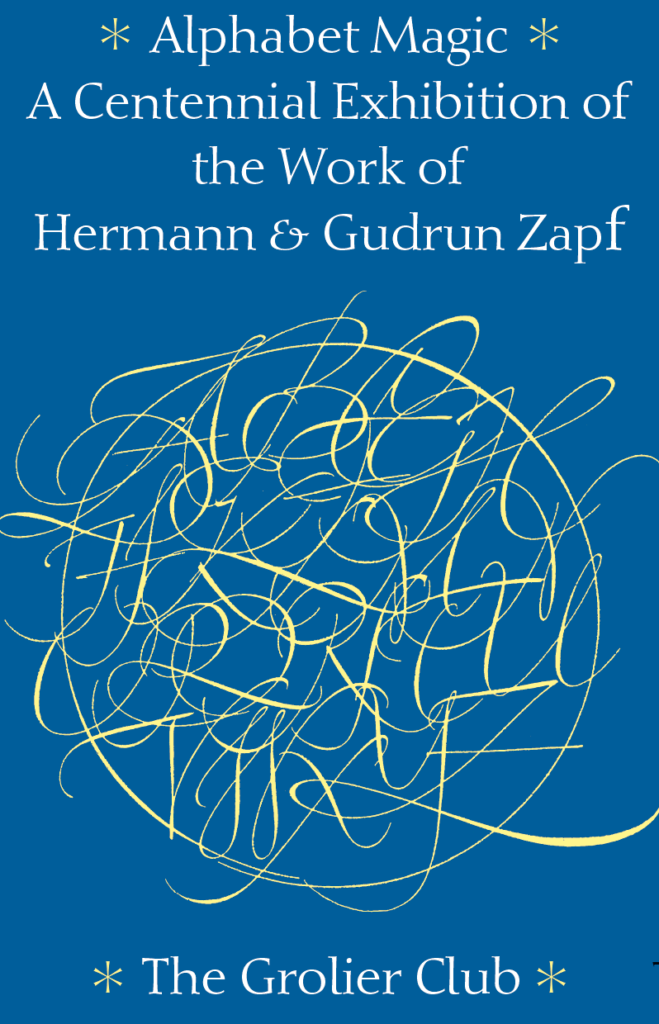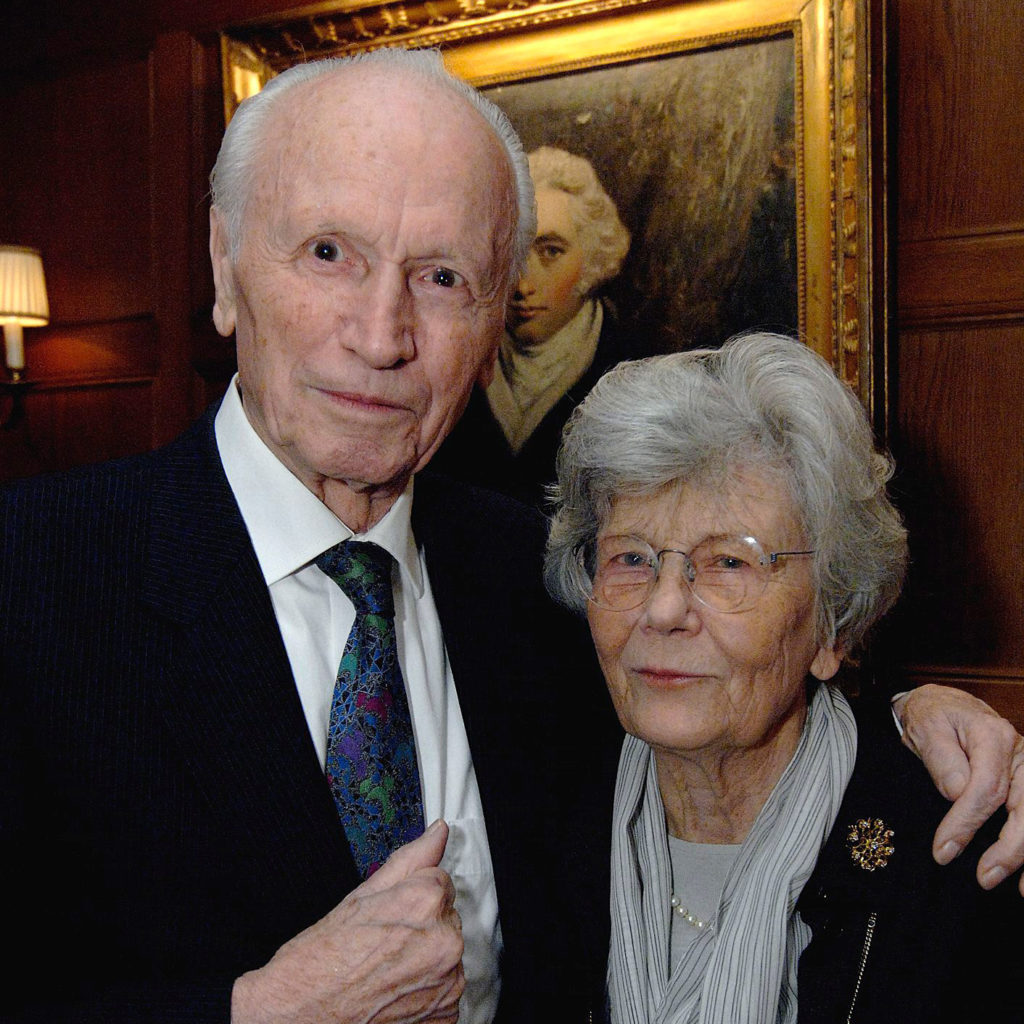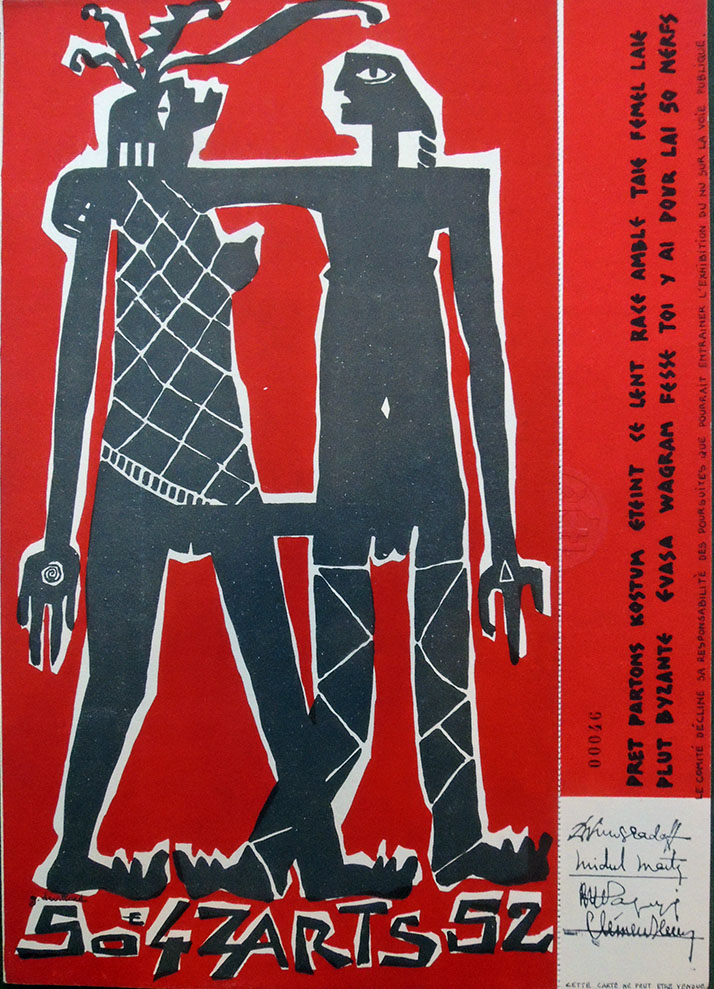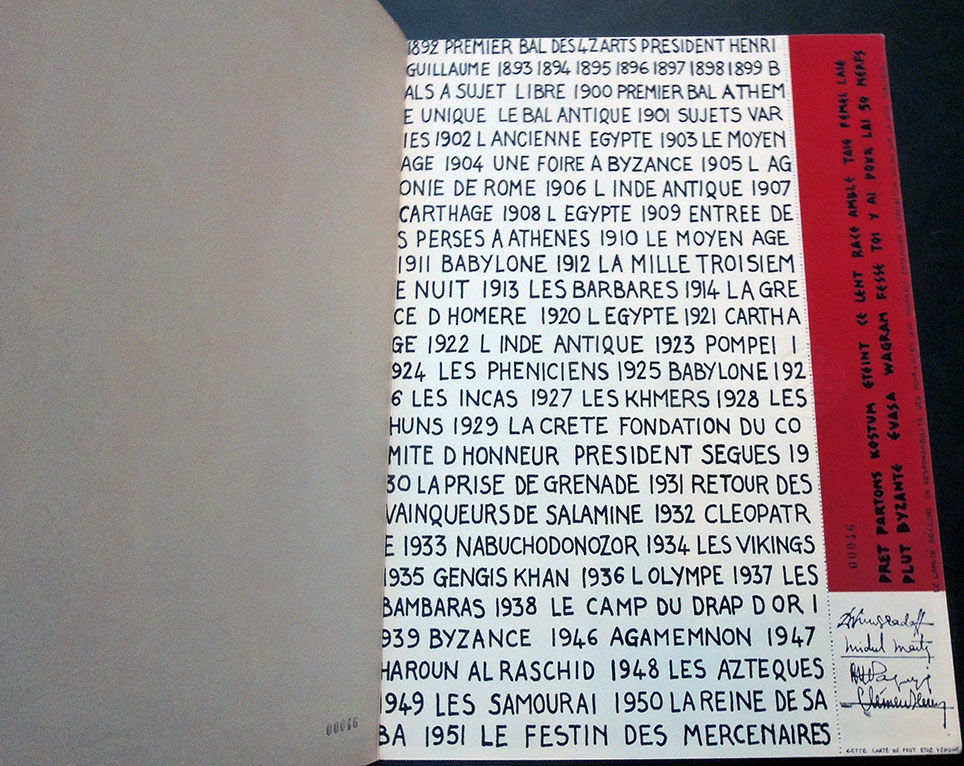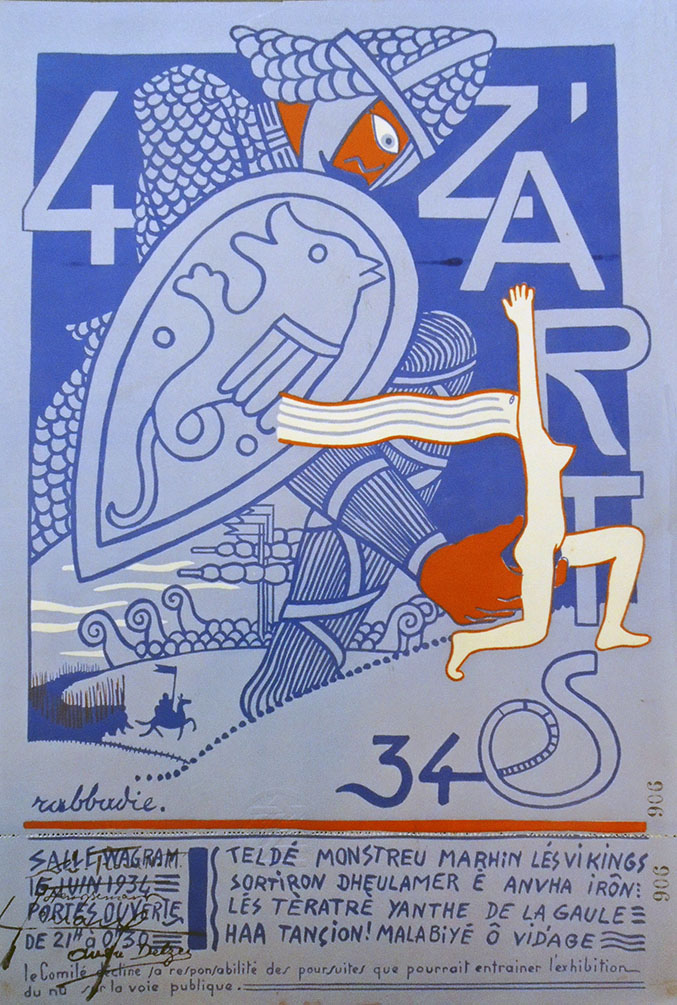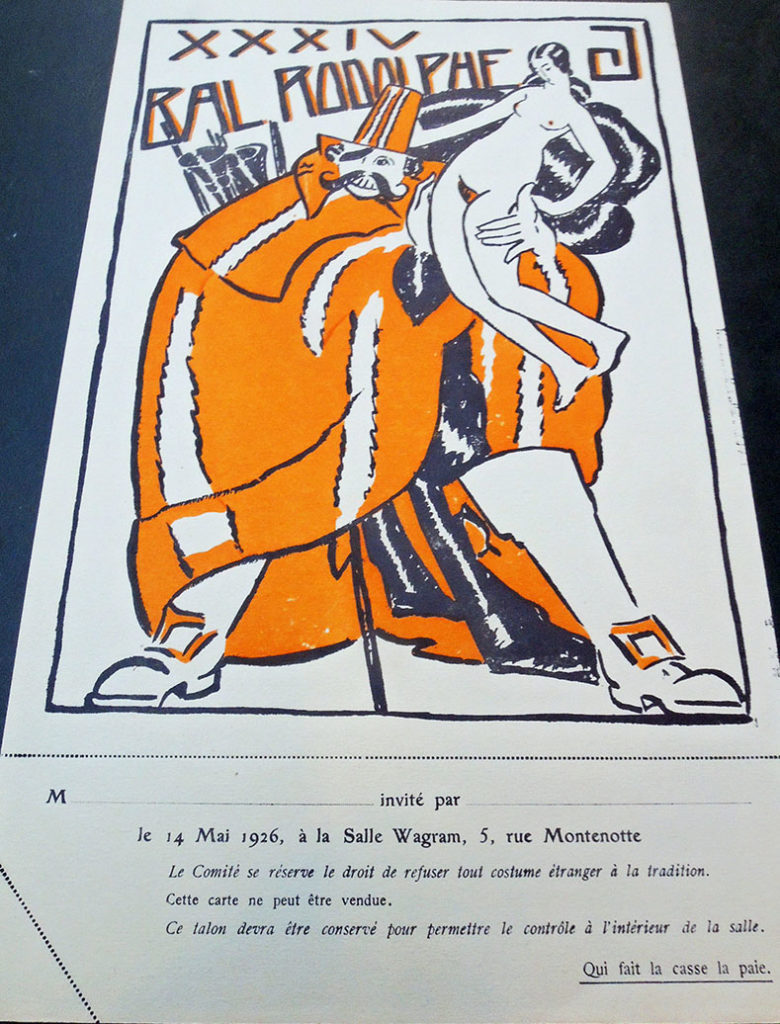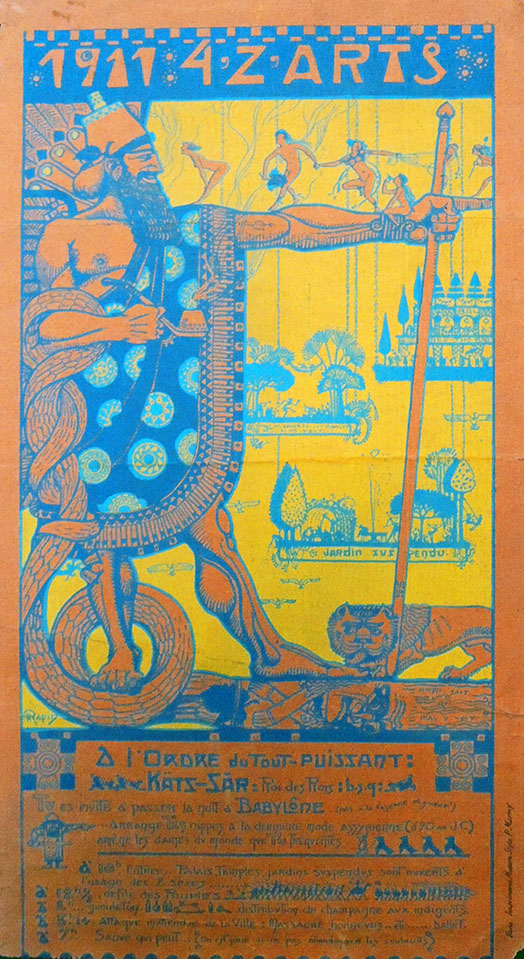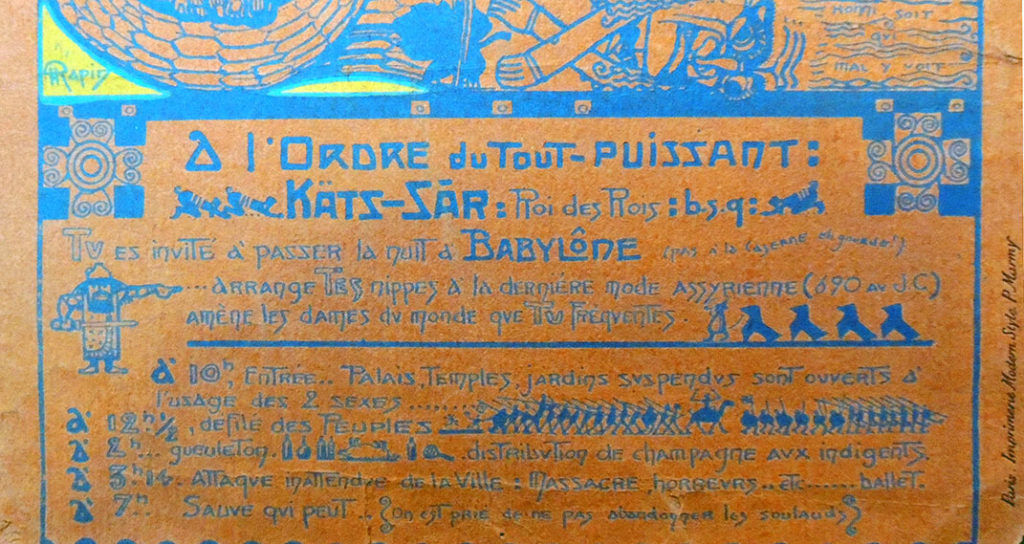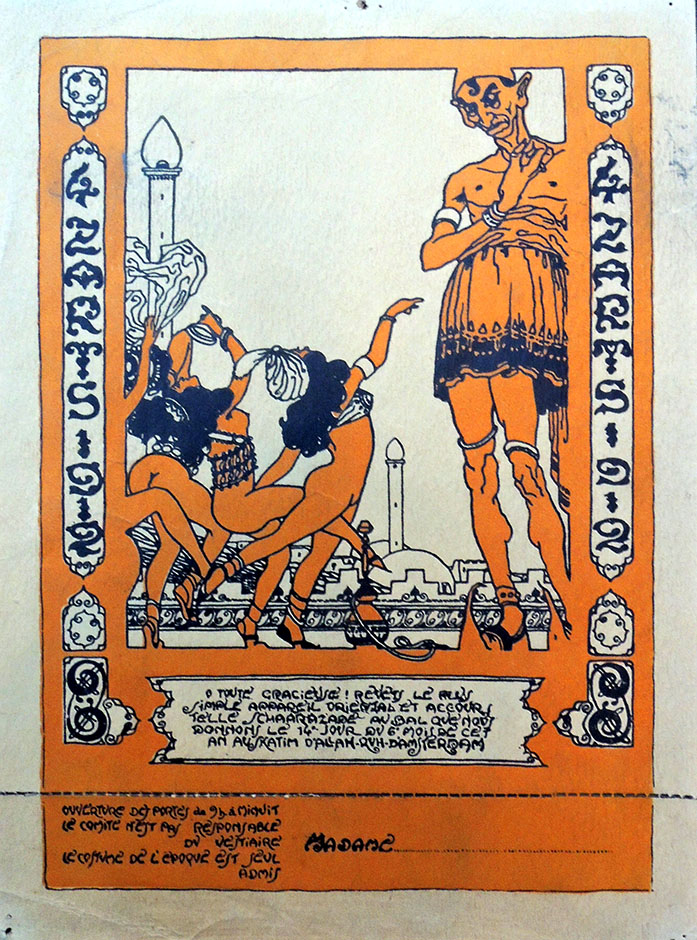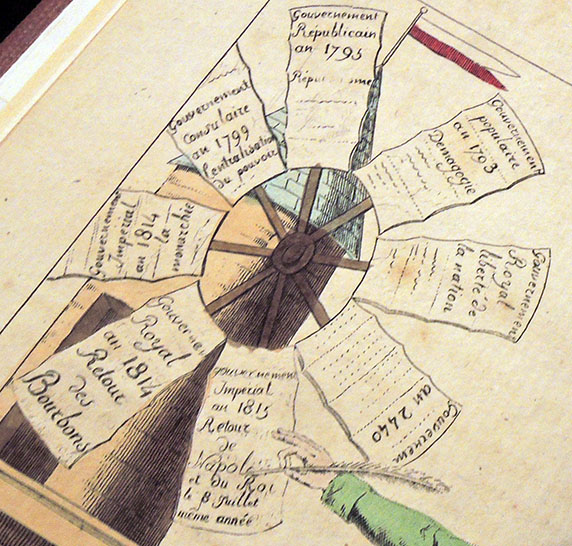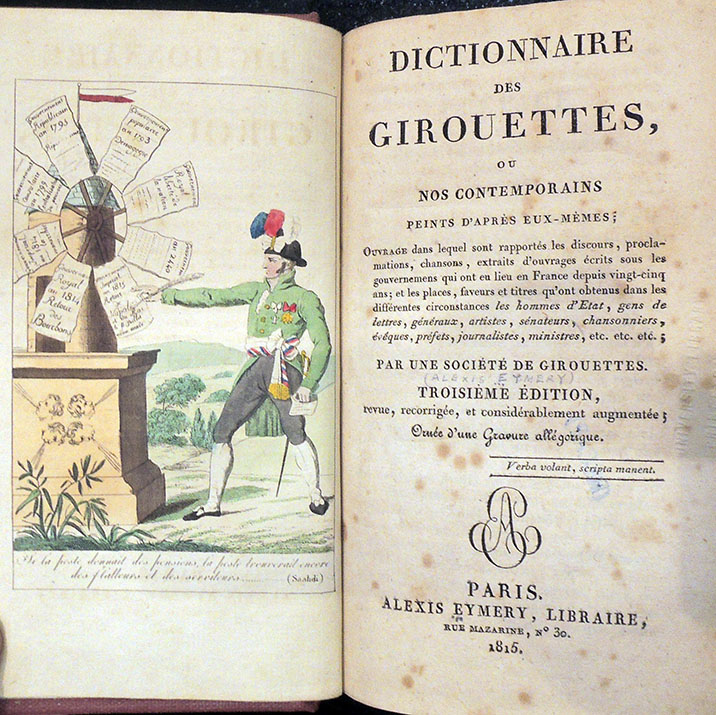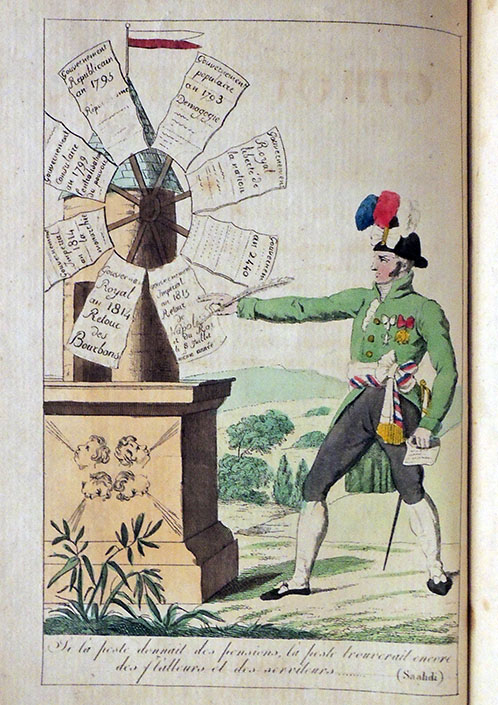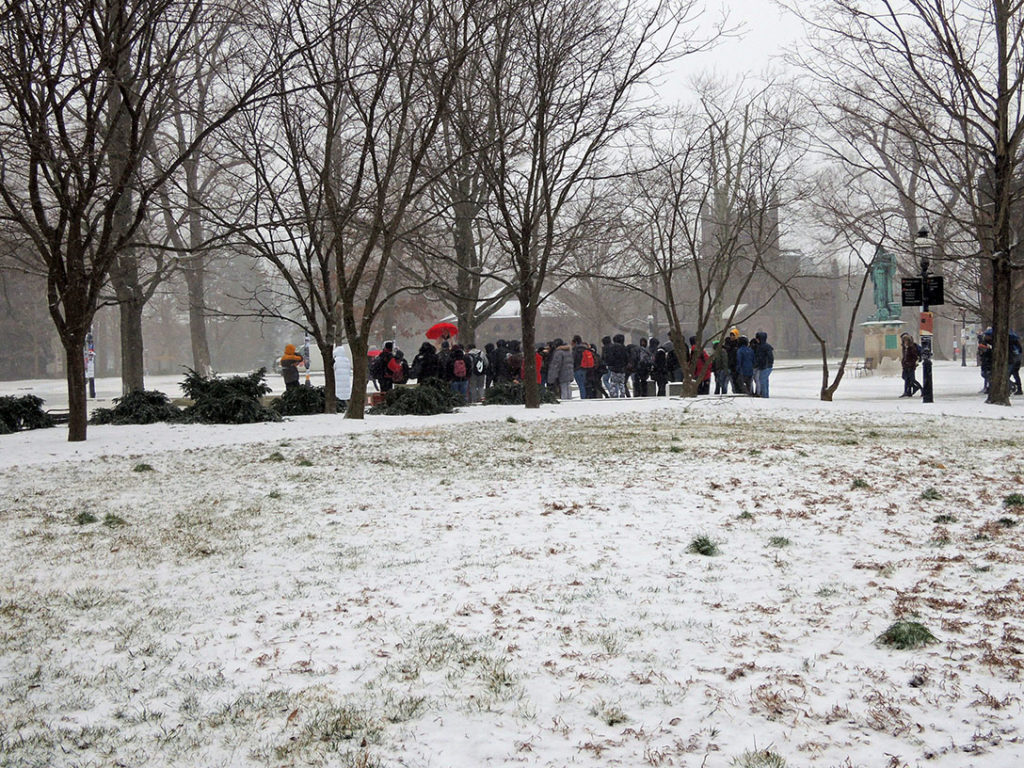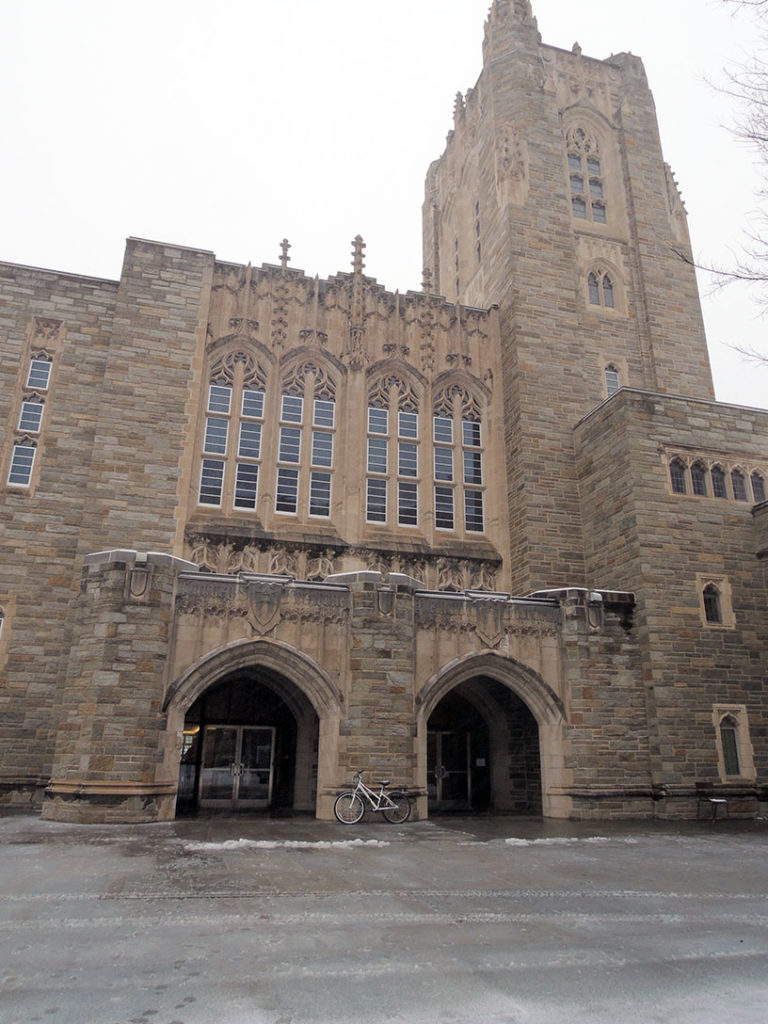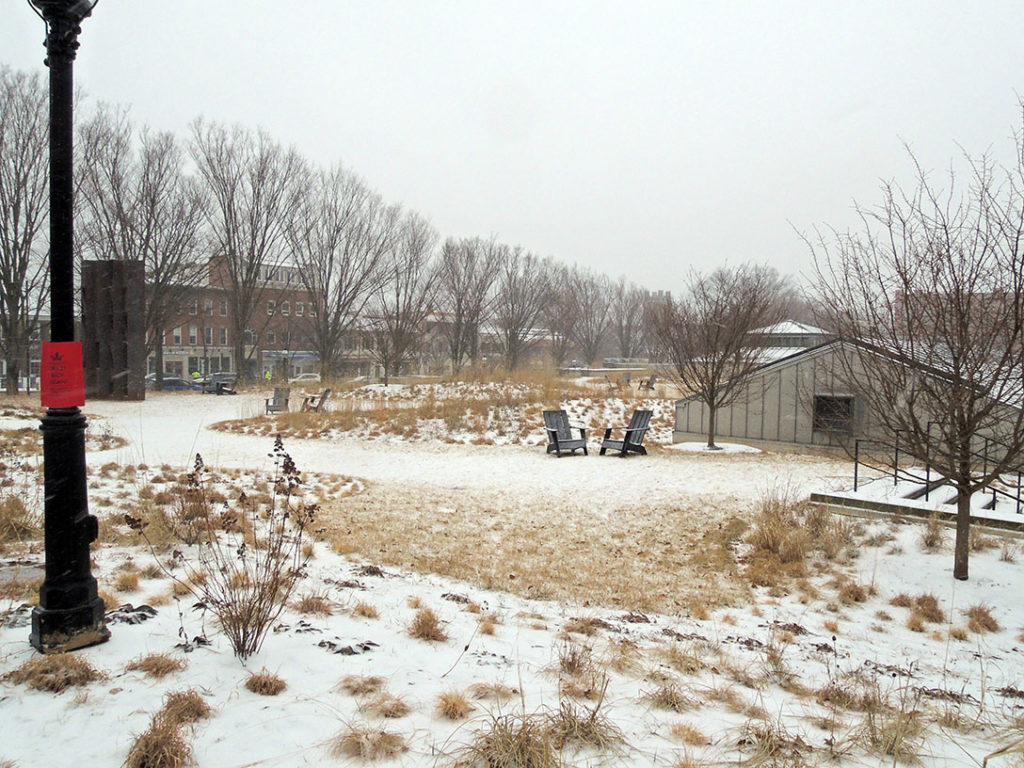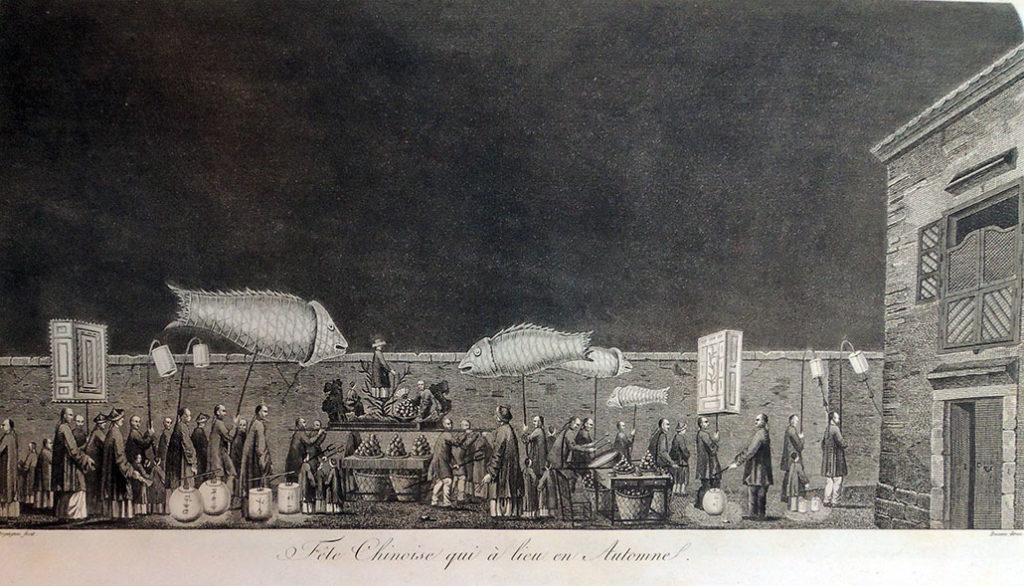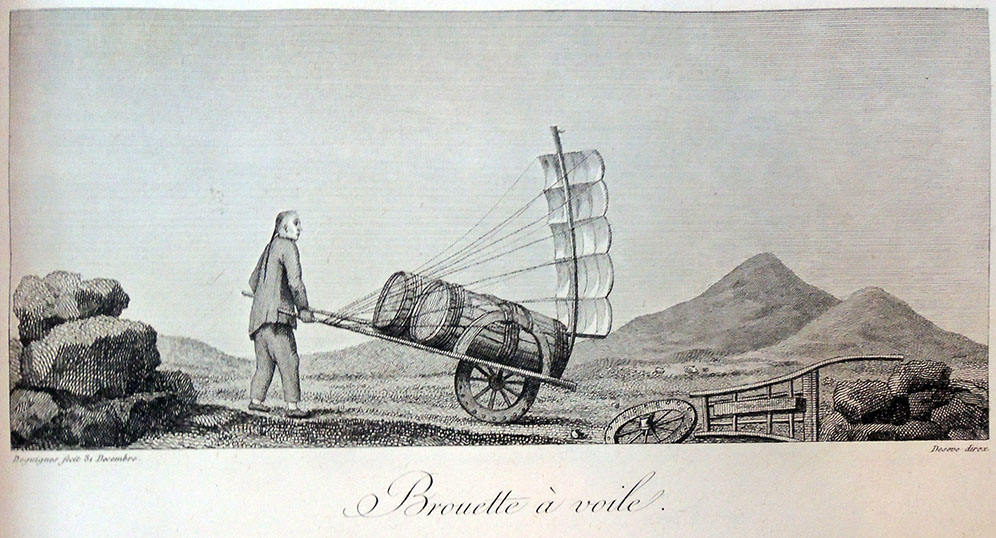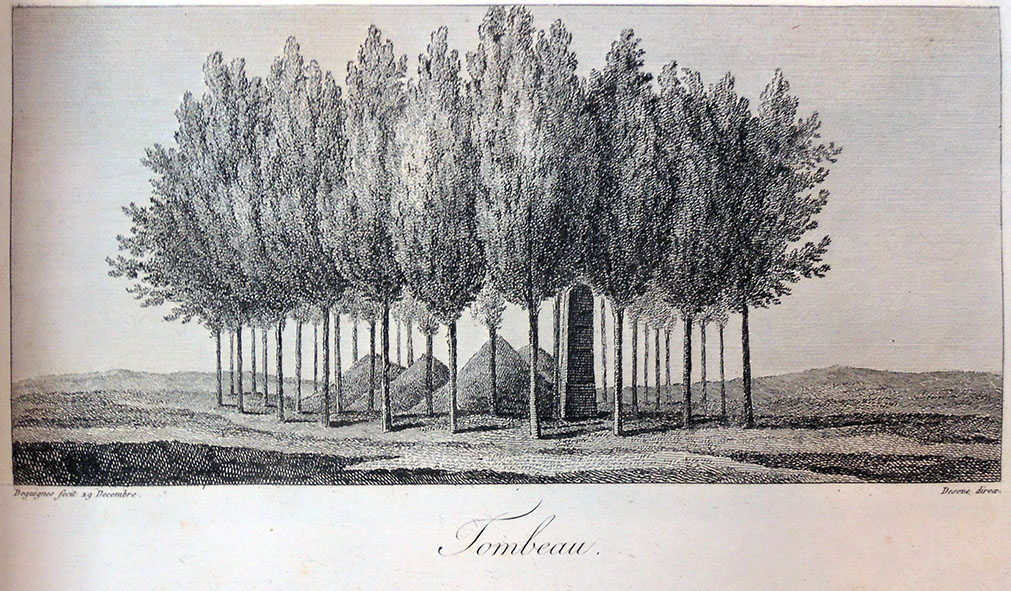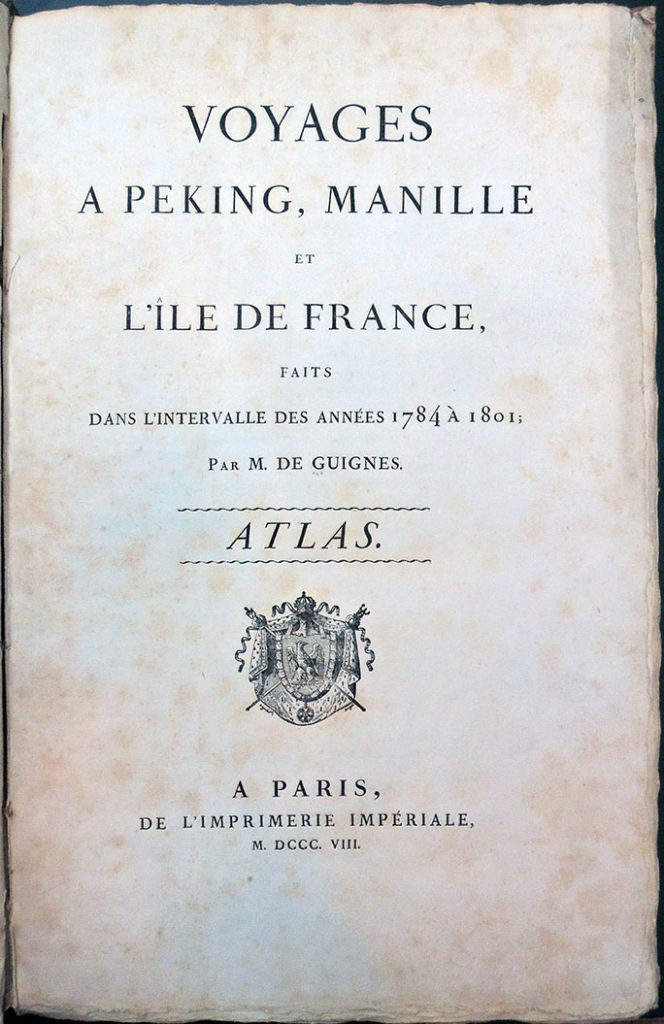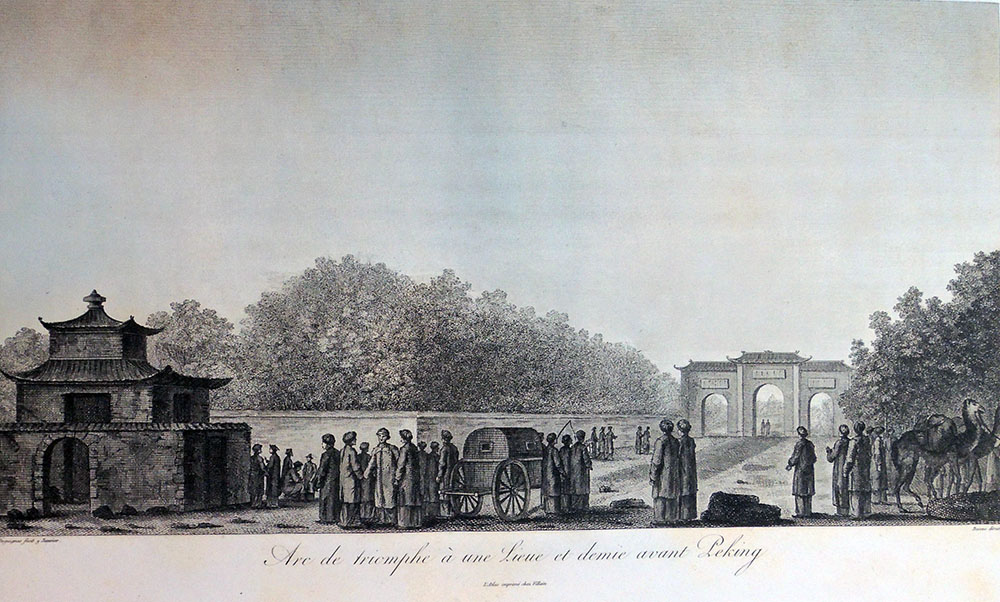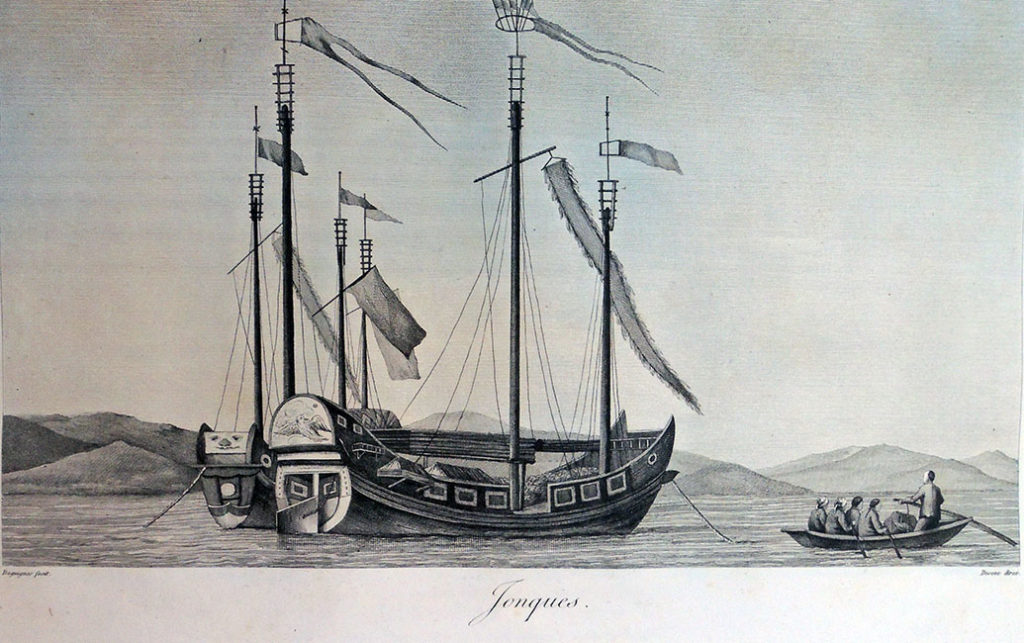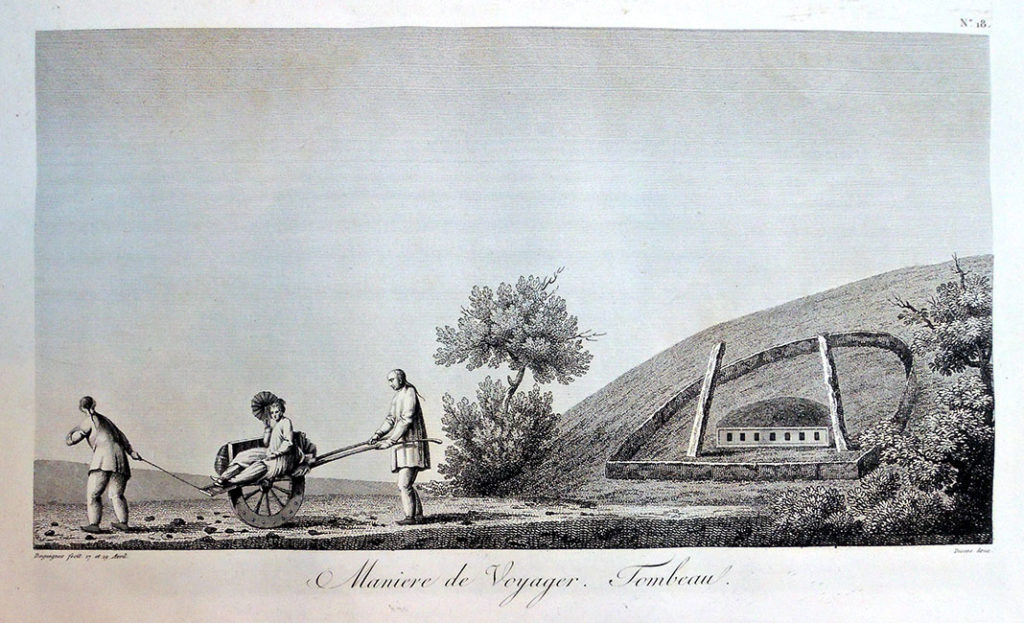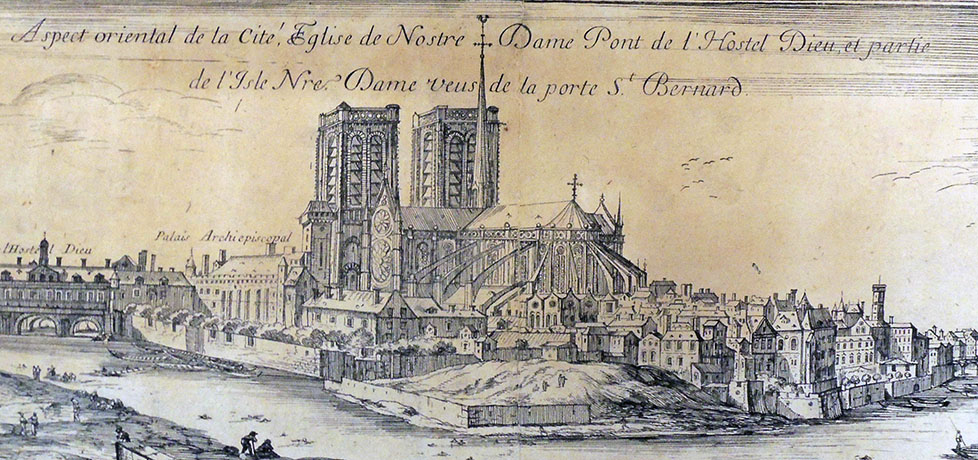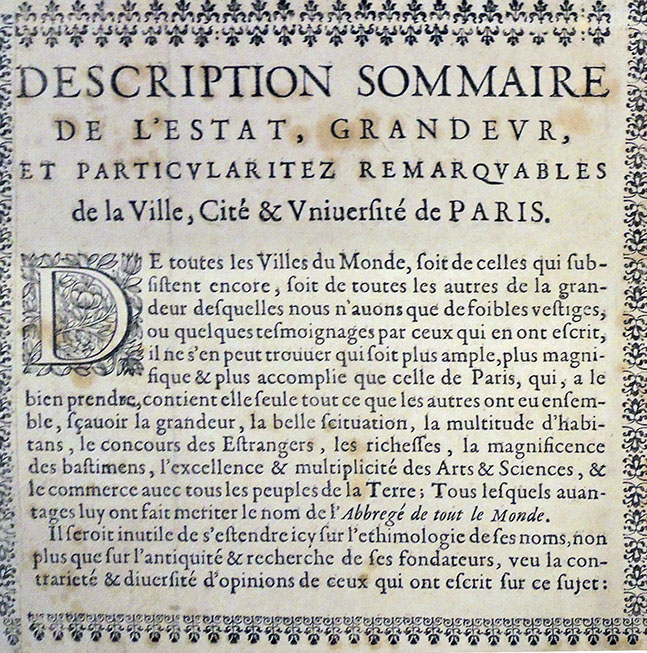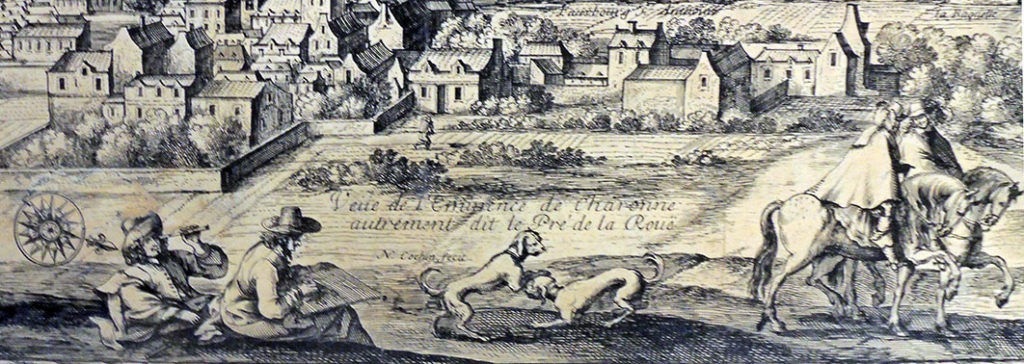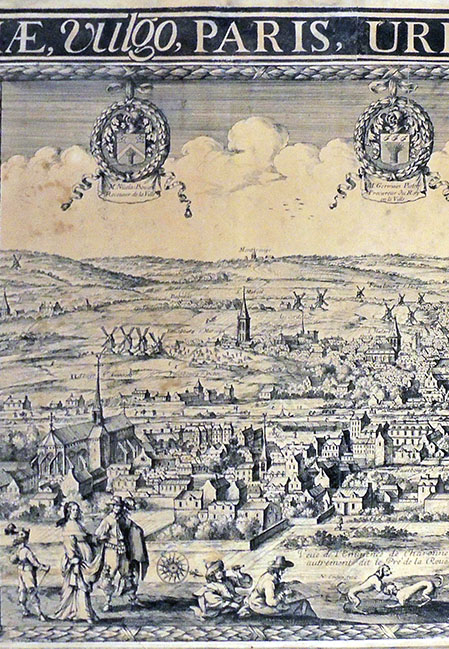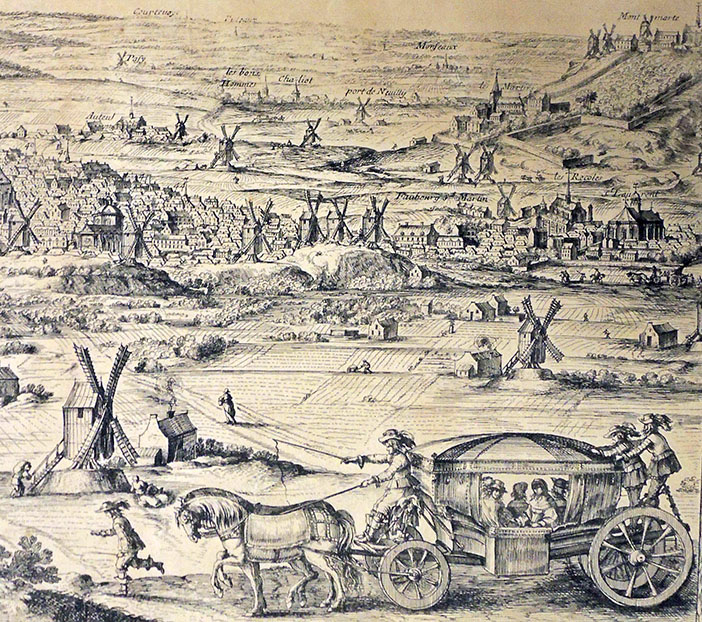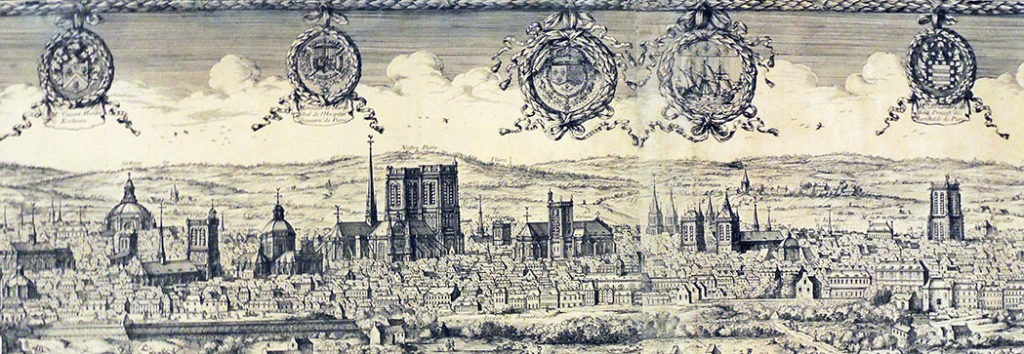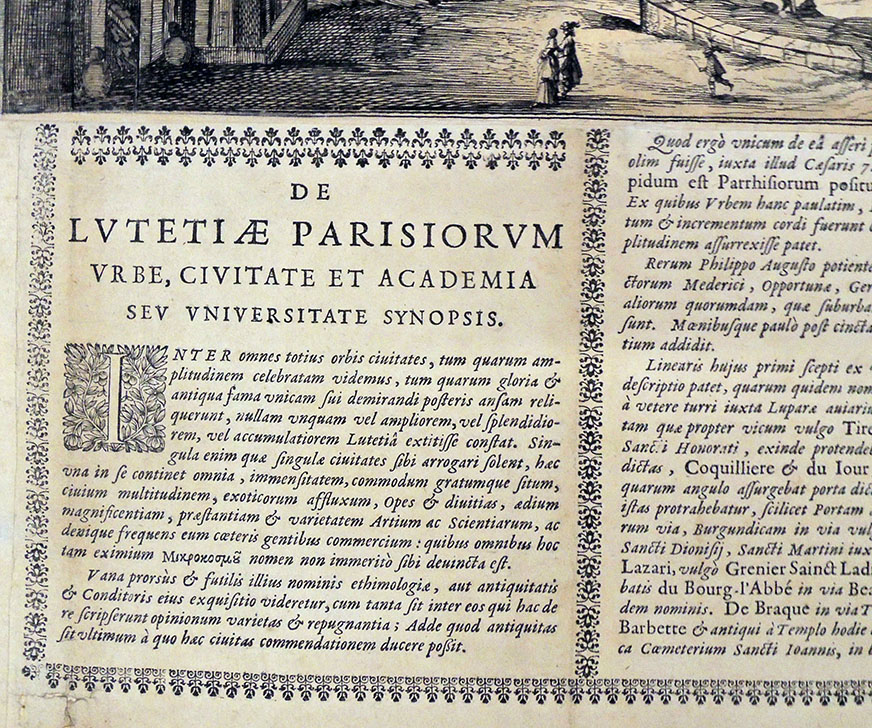Earlier this week, we welcomed the Columbia University students in VIAR Un3413, Ben Hagari’s printmaking class “Print into Motion” to the Graphic Arts Collection. According to the syllabus, the objective of this course “is to navigate through the intersection of time with print as well as the relationship between a still and a moving image. Students will explore elements of duration, seriality, sequentiality, and storytelling.”
Here are a few moments of discovery with our collection of optical devices. Above is a Polyorama Panoptique next to a magician’s blow book.
Here the students recognize an anamorphic portrait of Jules Verne embedded in this print by István Orosz. When a cylindrical mirror is placed on the moon, shining above a fantastic landscape called Mysterious Island, the image comes together to form a realistic face.
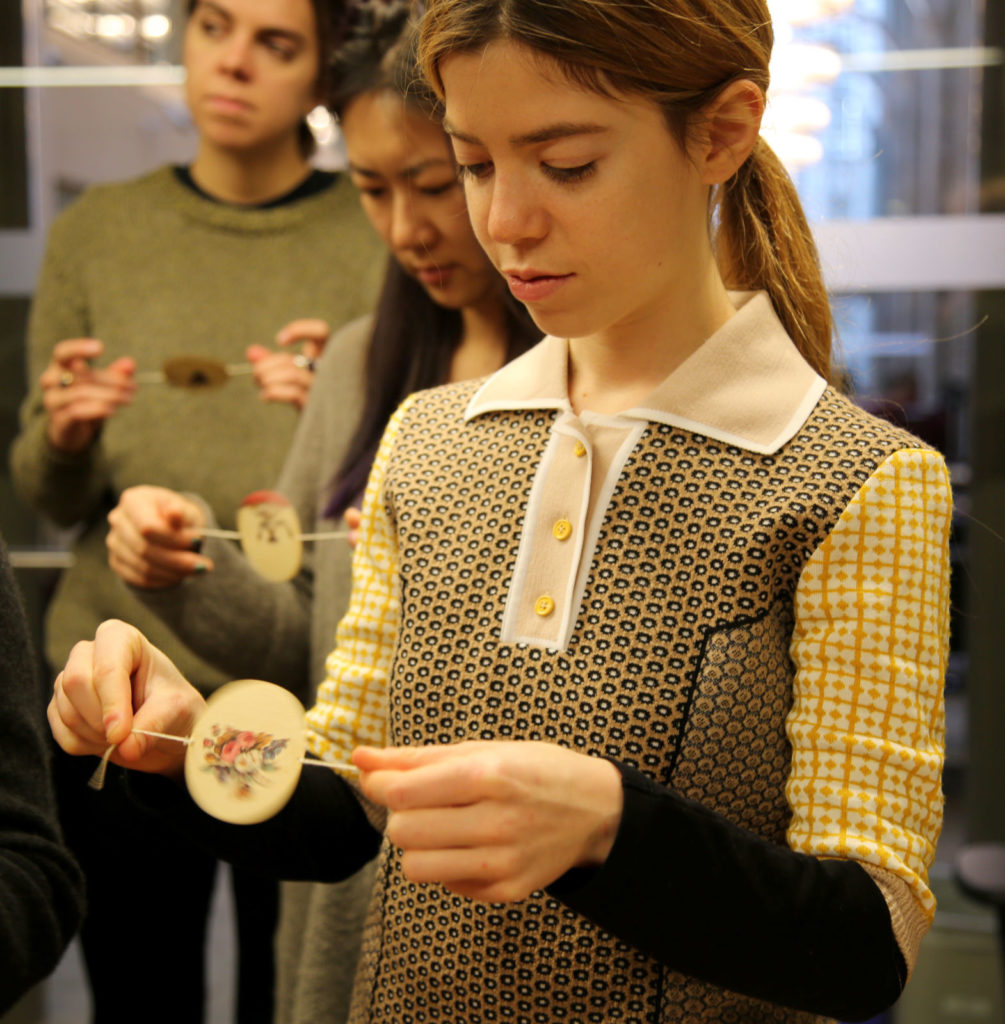 The invention of the thaumatrope [seen above and below] is usually credited to British physician John Ayrton Paris, who used one to demonstrate persistence of vision to the Royal College of Physicians in 1824. Paris also described the device in his 1827 educational book Philosophy in Sport Made Science in Earnest, with an illustration by George Cruikshank (Graphic Arts Collection Cruik 1827.5).
The invention of the thaumatrope [seen above and below] is usually credited to British physician John Ayrton Paris, who used one to demonstrate persistence of vision to the Royal College of Physicians in 1824. Paris also described the device in his 1827 educational book Philosophy in Sport Made Science in Earnest, with an illustration by George Cruikshank (Graphic Arts Collection Cruik 1827.5).
 A chromotrope slide for a magic lantern [animated below].
A chromotrope slide for a magic lantern [animated below]. 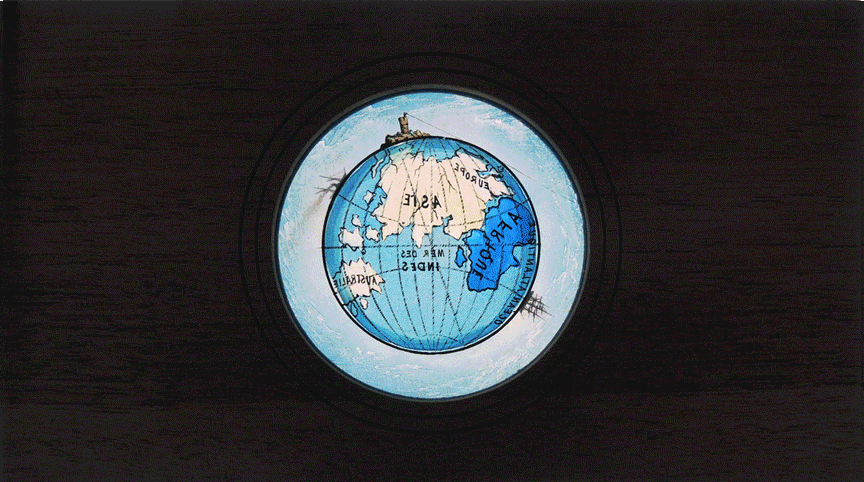
The most famous owner and operator of a camera lucida [above] was William Henry Fox Talbot (1800–1877), who later copyrighted paper photography. With the camera lucida and a camera obscura, he recalled with pleasure “the inimitable beauty of the pictures of nature’s painting which the glass lens of the Camera throws upon the paper in its focus—fairy pictures, creations of a moment, and destined as rapidly to fade away.” These thoughts in turn prompted Talbot to muse “how charming it would be if it were possible to cause these natural images to imprint themselves durably, and remain fixed upon the paper.” “And why should it not be possible?” —https://www.metmuseum.org/toah/hd/tlbt/hd_tlbt.htm

